Female Body Shape Calculator
Body Shape Calculator
Upper Body Measurements
Lower Body Measurements
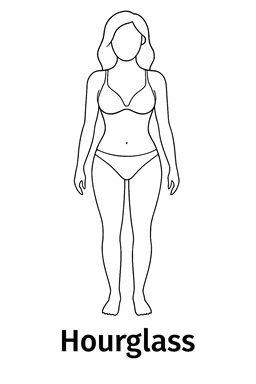
Calculation Steps:
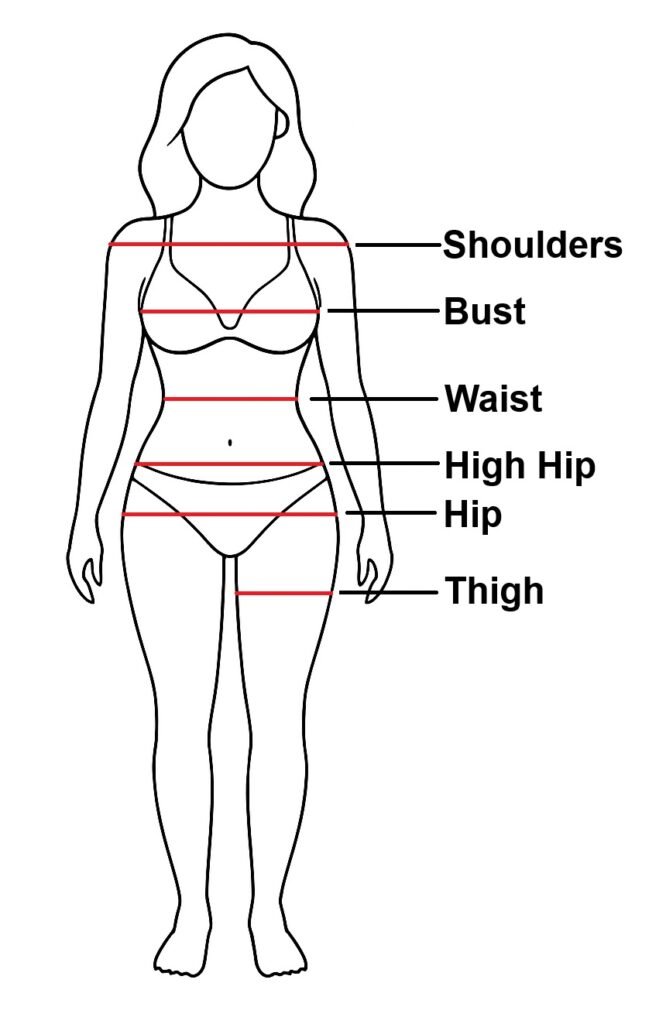
How this calculator works
1. Input Measurements
Upper Body:
- Bust (around the fullest part of the chest)
- Shoulder (widest point from shoulder to shoulder)
- Waist (narrowest part, usually above the belly button)
Lower Body:
- High Hip (3-4 inches below the waist)
- Hip (widest part around the buttocks)
- Thigh (circumference at the fullest part of the thigh)
2. Key Calculations
The calculator computes the following ratios and differences:
| Ratio/Difference | Formula | What It Determines |
| Bust-Hip Difference | Bust – Hip | Balanced vs. Top/Bottom Heavy |
| Shoulder-Hip Difference | Shoulder – Hip | Inverted Triangle (if shoulders are wider) |
| Waist-Hip Ratio (WHR) | Waist ÷ Hip | Waist definition (lower = more curvy) |
| High Hip-Waist Difference | High Hip – Waist | Spoon-shape detection |
| Thigh Proportion | Thigh ÷ Hip | Pear/Spoon shape (if thighs are large relative to hips) |
3. Women Body Shape Types
The calculator compares the measurements to classify the body into 6 main shapes:
- Hourglass (X)
- Pear (Triangle or A)
- Inverted Triangle (V)
- Rectangle (Straight or H)
- Apple (Round or O)
- Spoon (8 Shape or Subtype of Pear)
- Athletic (Toned with Moderate Curves)
4. Results Display
The calculator shows:


Female Body Shape Types
1. Hourglass (X Shape)
Characteristics:
- Bust and hips are nearly equal in width
- Well-defined waist (at least 25% smaller than bust/hips)
- Balanced upper and lower body
Example Measurements:
- 36-26-36 inches (Bust-Waist-Hips)
Fashion Styling Tips:
- Emphasize the waist with belts or fitted dresses
- Wrap dresses, peplum tops, high-waisted bottoms
Symmetrical top and bottom with a defined waist.

2. Pear (Triangle or A Shape)
Characteristics:
- Hips wider than bust (by 2+ inches)
- Waist is narrower than hips
- Fuller thighs/buttocks
Example Measurements:
- 34-28-40 inches
Fashion Styling Tips:
- Balance proportions with A-line skirts or wide-leg pants
- Dark bottoms + bright/patterned tops
- V-necks to draw attention upward
Lower body is more prominent than the upper body.
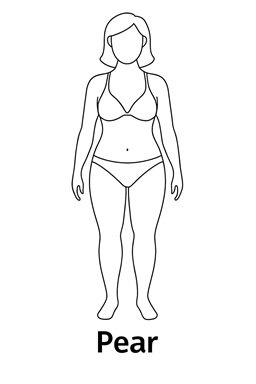
3. Apple (Round or O Shape)
Characteristics:
- Waist is the widest part (larger than bust/hips)
- Broader shoulders and midsection
- Slimmer legs
Example Measurements:
- 38-34-36 inches
Fashion Styling Tips:
- Empire waistlines and flowy tunics
- Dark colors around the midsection
- Structured jackets to create definition
Full midsection with little waist definition.
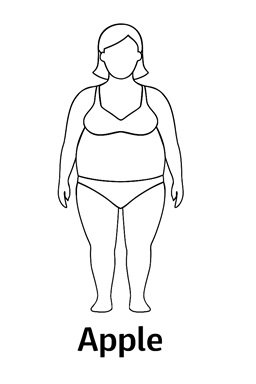
4. Rectangle (Straight or H Shape)
Characteristics:
- Bust, waist, and hips are similar in width
- Minimal waist definition
- Athletic/slender frame
Example Measurements:
- 34-32-35 inches
Fashion Styling Tips:
- Create curves with ruffles, peplums, or belts
- Off-shoulder tops to add dimension
- Layered outfits for volume
Straight silhouette, minimal curves.
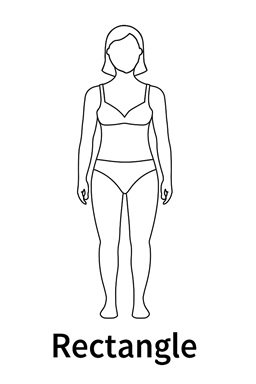
5. Inverted Triangle (V Shape)
Characteristics:
- Shoulders/bust wider than hips
- Little waist definition
- Often athletic or broad-shouldered
Example Measurements:
- 38-30-34 inches
Fashion Styling Tips:
- Balance with wide-leg pants or full skirts
- Avoid shoulder pads or boat necks
- Highlight legs with shorter hemlines
Broad upper body, smaller lower body.
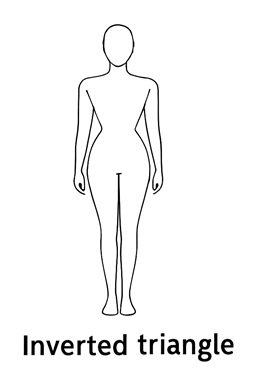
6. Spoon (8 Shape – Subtype of Pear)
Characteristics:
- Hips significantly wider than bust
- High “shelf-like” hips
- Thighs are prominent (>70% of hip size)
Example Measurements:
- 34-28-42 inches
Fashion Styling Tips:
- Fit-and-flare dresses
- Dark-colored bottoms
- Tops with detailing (e.g., ruffles) to balance hips
Fuller lower hips with rounded appearance.
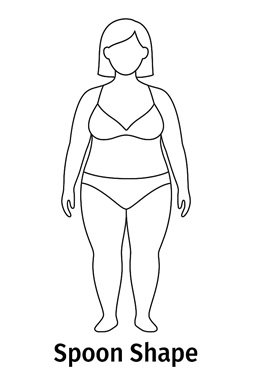
7. Athletic (Toned with Moderate Curves)
Characteristics:
- Muscular shoulders and legs
- Waist slightly defined
- Firm, balanced physique
Example Measurements:
- 36-30-36 inches
Fashion Styling Tips:
- Bodycon dresses to show toned shape
- Tailored blazers
- Sports luxe fashion
Muscular frame, often appears straight or slightly rectangular.

What is Waist-to-Hip Ratio (WHR)?
The Waist-to-Hip Ratio (WHR) is a measurement which compares the circumference of your waist to that of your hips. It’s a key indicator of body fat distribution and is often used to assess health risks associated with obesity, such as heart disease and diabetes.
Waist to Hip Ratio Significance
- Health Indicator: Higher WHR is linked to increased risk of cardiovascular diseases and metabolic disorders.
- Body Classification: Helps determine body type (e.g., apple vs. pear).
- Fitness & Aesthetics: Used in fitness to track fat loss and muscle distribution.
Waist Hip Ratio Calculation
WHR Formula:
- WHR = Waist Circumference (inches/cm)/Hip Circumference (inches/cm)

Steps to Measure WHR:
- Waist: Measure the narrowest part (usually just above the belly button).
- Hips: Measure the widest part of your buttocks.
- Divide waist by hip to get WHR.
Example Calculation:
- Waist: 28 inches
- Hips: 38 inches
WHR: 28 / 38 = 0.73
Waist Hip Ratio for Women:
- Healthy WHR for Women is Below 0.85
- WHR above 0.85 is High Risk and indicates abdominal obesity
Waist-Hip Ratio (WHR) Vs Health Risk Level
|
WHR Range (Women)
|
Health Risk Level |
What It Means
|
| Less than 0.80 | Low Risk |
Fat is mostly around hips (healthier)
|
| 0.81 to 0.85 | Moderate Risk |
Balanced fat, but risk is rising
|
| Greater than 0.85 | High Risk |
Fat is around waist (more dangerous)
|
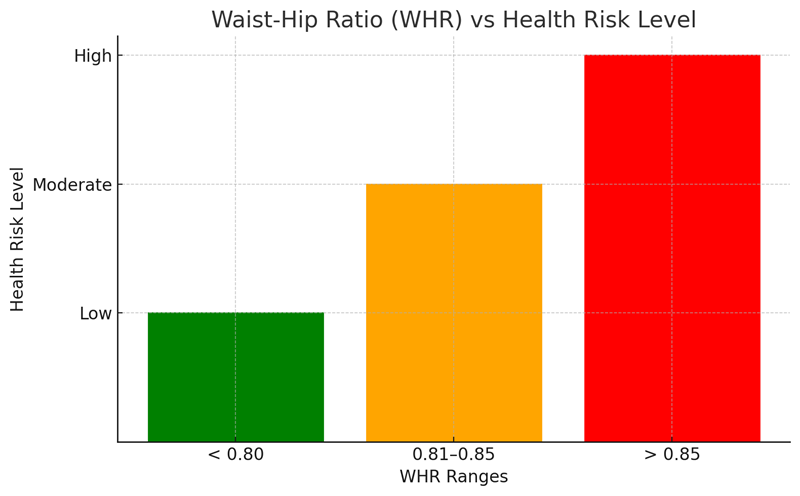
What is a Perfect Body Shape?
A perfect body is a personal preference, there’s no single ideal shape. Society often praises the hourglass figure (balanced bust and hips with a small waist), but beauty comes in all forms, including pear, apple, rectangle, and inverted triangle shapes. Confidence and health matter more than fitting a specific mold.
A healthy body weight, good posture, and staying active contribute to an attractive appearance. Instead of chasing a “perfect” shape, focus on feeling strong, fit, and comfortable in your own skin.
What are Waist-to-Hip Ratios (WHR) for Different Body Shapes?
Each body shape has a typical waist-to-hip ratio (WHR) that helps identify it.
WHR is a useful way to understand your body proportions and potential health risks. Here’s a breakdown for each shape:
Hourglass: WHR Range: 0.7 – 0.75
Spoon: WHR Range: 0.7 – 0.75
Pear: WHR Range: 0.7 – 0.8
Athletic: WHR Range: 0.75 – 0.85
Rectangle: WHR Range: 0.8 – 0.85
Inverted Triangle: WHR Range: 0.85 – 1.0+
Apple: WHR Range: 0.85 – 1.0+
- Lower WHR (0.7–0.8) = More curvy (hourglass, pear, spoon).
- Mid WHR (0.8–0.85) = Balanced (rectangle, athletic).
- Higher WHR (0.85+) = Less waist definition (apple, inverted triangle).